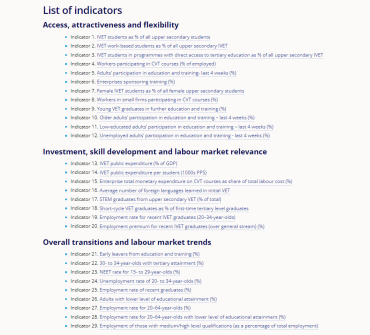A key aim of EU policy is that governments, individuals, and employers continue investing in skill development to strengthen social inclusion and improve economic growth and competitiveness. The indicator below is defined as the total annual monetary expenditure on CVT courses paid by employers (excluding personnel absence costs which are susceptible to high measurement error). It is expressed as a percentage of the employers’ total labour costs.
Enterprise total monetary expenditure on CVT courses as share of total labour cost (%)

Source: Cedefop calculations, based on Eurostat data, Continuing Vocational Training Survey (CVTS).
Key points
In the EU, the average total monetary expenditure on CVT courses as a percentage of total labour costs was estimated at 0.7% in 2020. The highest estimate values were for France and the Netherlands (1.3%). Enterprise expenditure on CVT courses was below 1% of total labour cost in all other countries, with the lowest levels in Romania and Greece (0.1%). The Covid 19 pandemic hit in 2020 and compared to 2015, total monetary expenditure levels in the EU overall and in most countries fell. In the EU, it fell 0.1 percentage points.
At country level, enterprises in Germany and the Netherlands kept the same levels of total monetary expenditure in CVT courses relative to their total labour cost and those in Italy increased it by 0.2. percentage points. In all other EU countries for which reliable comparisons were possible the indicator went down. Drops ranged from 0.7 percentage points (Spain and Malta) to 0.1 (France, Latvia, Austria, Slovenia, Slovakia). The only non-EU countries for which 2020 data were available were Norway (1.1% and up to 0.2 percentage points as compared to 2015) and Serbia (0.2% in 2020).
Table 15. Enterprise total monetary expenditure on CVT courses as share of total labour cost (%)

Source: Cedefop calculations, based on Eurostat data, Continuing Vocational Training Survey (CVTS). Notes: b) ‘break in time series’; data are not presented when they are not available and/or do not support sufficiently reliable comparisons across countries or over time.


